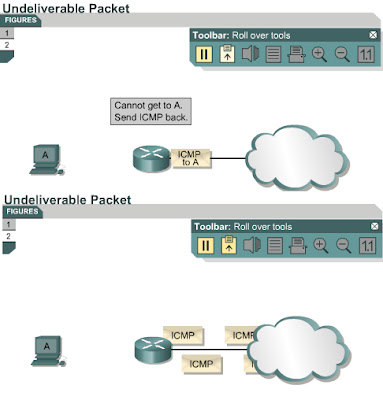Use ping to test destination reachability
8.1.5 This page will explain how the ping command can be used to test the reachability of a network.
The ICMP protocol can be used to test the availability of a particular destination. Figure shows ICMP being used to issue an echo request message to the destination device. If the destination device receives the ICMP echo request, it formulates an echo reply message to send back to the source of the echo request. If the sender receives the echo reply, this confirms that the destination device can be reached using the IP protocol.
The echo request message is typically initiated with the ping command as shown in Figure . In this example, the command is used with the IP address of the destination device. The command can also be entered with the IP address of the destination device as shown in Figure . In these examples, the ping command issues four echo requests and receives four echo replies. This confirms IP connectivity between the two devices.
As seen in Figure , the echo reply includes a time-to-live (TTL) value. TTL is a field in the IP packet header used by IP to provide a limitation on packet forwarding. As each router processes the packet, it decreases the TTL value by one. When a router receives a packet with a TTL value of 1, it will decrement the TTL value to 0 and the packet cannot be forwarded. An ICMP message may be generated and sent back to the source machine, and the undeliverable packet is dropped.
The next page will discuss excessively long routes



